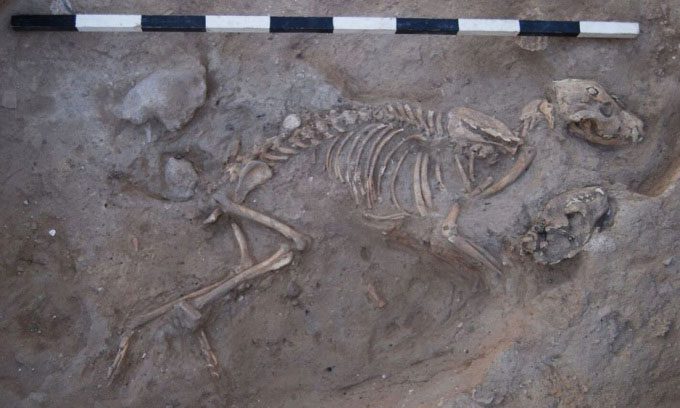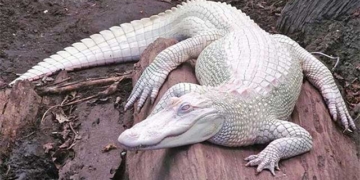The 2,500-Year-Old Cemetery in the Ancient City of Ashkelon Captivates Scientists Due to the Large Number of Dogs Buried Without Clear Reason.
Archaeologists from the Leon Levy Expedition discovered over 1,000 dog skeletons dating from the 5th to 3rd centuries BCE while excavating beneath a hill in the ancient city of Ashkelon, Israel, near the Mediterranean coast, in 1985.

A dog buried in Ashkelon. (Photo: Leon Levy Expedition to Ashkelon).
This unprecedented discovery is significant because there are no other sites in the ancient Near East with such a concentration of dog graves in one location, and there is no clear explanation for it. This finding has intrigued many scholars who are trying to uncover the reasons behind the mass burials of dogs in Ashkelon.
The dogs were buried in shallow, seemingly unmarked graves, lying on their sides with their tails positioned between their hind legs. Many graves were found beneath streets and in narrow alleyways, requiring small pits closely surrounding the dogs’ bodies. Some dogs had their legs tightly pressed together, resembling a bound position prior to burial. Notably, there were no grave goods, and the dogs did not exhibit any specific orientation in their burial positions.
The skeletons showed no clear signs of butchering, and evidence of violence was minimal. Stratigraphic analysis of the burial site, combined with assessments of the age and sex of the dogs at the time of death, indicates that they did not all die in a single disaster. Instead, they appear to have died and been buried gradually over a long period.
American archaeologist Lawrence Stager, who led the excavation, believes that these dogs belonged to a healing cult of the Phoenicians, where they were trained to lick human wounds in exchange for a fee. He theorizes that they were revered in a coastal temple near the burial site, and that ancient people viewed them as sacred creatures, burying them with care upon death. However, scientists have found no traces of such a temple.
Dogs, including some instances of puppies, were associated with various cults and rituals in ancient Near Eastern cultures. The ancient Egyptians linked dogs (along with a few other animals) to deities such as Dwamutef, Wepwawet, Khentimentiu, and Anubis, and worshipped them in specific temple settings. In the ancient Persian Empire, the Achaemenids, dogs were highly revered, and followers of Zoroastrianism regarded them as the second most important creatures after humans. In ancient Greece, dogs were often associated with the god Asclepius.
The absence of clear physical evidence on the dog bones at Ashkelon does not eliminate the possibility that they might have been ritually killed. In the ancient Near East, certain methods of killing, such as poisoning and drowning, would not leave obvious traces on animal bones. The high proportion of puppies in the burial site at Ashkelon may suggest they were favored. However, some scholars argue that high mortality rates in young animals were not uncommon in a context lacking veterinary care.
Two scholars, P. Wapnish and B. Hesse, authors of a 1993 study, disagree with the hypothesis of dog worship and the religious nature of the Ashkelon cemetery. Instead, they argue that these were feral urban dogs, and the concentrated burials at one site were merely a local custom. According to them, the graves hold no special significance, and dogs were simply buried wherever there was space, rather than in a prepared cemetery for dogs.


















































